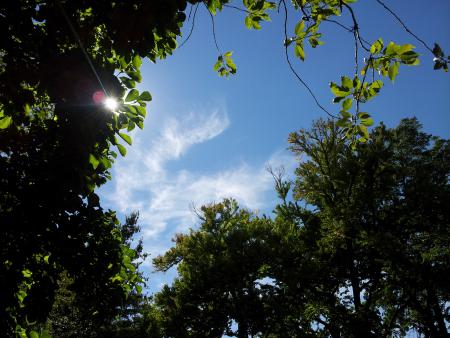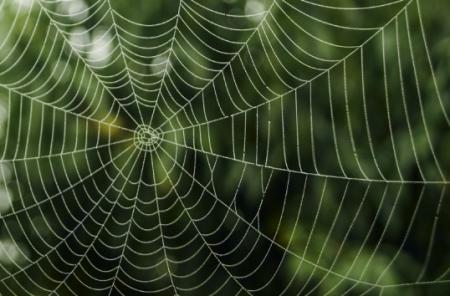Serendip is an independent site partnering with faculty at multiple colleges and universities around the world. Happy exploring!
Srucara's blog

The Science, Ethics, and Politics of Water - a Curriculum
Hi everyone, please download the following files for my curriculum and my rationale.

Holistic Musings and Reflections on Overcoming Fears
During our trip to Ashbridge Park, not only did I have a good time, but I noticed how effectively our class has cirlced back to the objectives of our class stated during the first few classes. I remember we wished to gain a greater understanding of the region of bryn mawr and the location and history surrounding it as well as an ecological understanding of our world through various perspectives (through fiction, poetry, feminism, nonfiction). I found that our experience in Ashbridge Park served as a holistic "Wrap up" to our course - we learned about the history of the creek as well as the geography of it in relation to our campus and philadelphia as well as efforts of environmental conservation and renovation - and of course - some poetry! We had also made the day friendly and actively serving to refresh and renew us all through good, healthy food (fruits) and de-stress chants, movements, and shouts!
My favorite aspect of the visit, however, was the group poem at the end. I found that activity to really ground me in the present moment and elevate our overall experience in the park through the eyes of each one of us in our particular contribution to the moment, and the year overall.

Surrendering to All That Is - Sacred Paths
"We are wounded in all the right places" - from Wounded by 1 Giant Leap

ECOnversations - An assembly of Dialogue, Podcasts, Questions, & Textual References on Representation, Stories, & Patterns
I. Movement As and Within Thought - A New Way of Looking at Representation

David Bohm -
“Thought tending to divide things into separate entities...each particle is only an abstraction of a relatively invariant form of movement in the whole field of the universe”
Do you think of a thought as distinct, separate particles or interconnected, flowing waves? How can this apply to representation? Are different representations separate particles or can they be abstract and interconnected?
Click: Movement Within/As Thought Podcast
II. What kind of representations are useful? How many do we need?
E: I wonder whether it is possible to “read” nature without the lens of experience. In other words, can we understand a story of the landscape without an understanding of (many) other stories?

Reflections on Reflections from Coetzee's - The Lives of Animals
Upon reading the reflections at the end of Coetzee's The Lives of Animals, I find that each of them serve to function as conveyers of the author’s (Coetzee’s) deeper motives and to bring them to light as well as to illuminate specific aspects of the work The Lives Of Animals. I find that each of them had unique takes on the work and unique ways of approaching them. Marjorie Garber used a more traditional critiquing and analyzing approach to the work by pointing out Coetzee’s possible motives and criticizing a few aspects of the work. She states that the format of the lecture (“a lecture within a lecture, a response within a response”) is a “strategy of control.” This strategy serves to “insulate the warring ideas…put in play by academics [such that] we don’t know whose voice to believe.” I agreed with this viewpoint because although I found Elizabeth Costello to play a central role to the piece, I found the voices of Norma and her Son to be distracting and also influential upon my experience with the work, beyond the words offered only by Elizabeth. Marjorie also points out Coetzee’s use of the Holocaust analogy, and in my opinion, subtly points out its inappropriate use in the work. She states of Elizabeth’s’ Holocaust analogy “could it be part of any analogy…it is the event beyond analogy many people say.”

An Interdisciplinary Walk
During our interdisciplinary Ecological and Geological ramble with the EcoLit Esem group, I had acquired a new awareness of the physical region that is the Bryn Mawr College campus. We had walked through the campus and identified some of the rock types which were used to build the buildings (Taylor built out of Baltimore Gneiss, the Pem’s built out of Wissahickon Schist, a rock which is abundant in the area). Both types of rock had distinct specifications and one was more grainy and darker than the other. On the stones making up Pem Arch, we found the rock to be home to some dark green moss as well (perhaps remnants of the ivy and other vegetation which once grew there a while ago?). I learned that Taylor is the highest point of the hill and “Bryn Mawr” – which means “big hill” inevitably must have haven created with Taylor Hall as the centermost point, on top of the big hill – in the middle of everything. This still stands true to this day as much of the campus extends in all directions out of Taylor Hall. It was a glorious sight to walk down from Taylor towards the hill directly atop the gymnasium and looking at the view towards the valley and the slopes that surrounded us. I noticed the immensity of the slopes and hills that make up Bryn Mawr’s campus unlike any other time (I’ve only lived in Brecon so far, so I walk through numerous hills every day multiple times just to get to the main campus). It was evident that slopes are a big part of the campus’s make up. Furthermore, we discussed the identity and history of Rhoad’s pond.

Economic Self Interests vs. Ethical Benefits

Image URL: http://www.natureskills.com/ecourse/nature-connect/
Aldo Leopold states of Ethics: (in his The Land Ethic) "We can be ethical only in relation to something we can see, feel, understand, love or otherwise have faith in" and that "Ethics are possibly a kind of community instinct-in-the-making."
I agree that our current societal values depend heavily on economic-self interests with respect to our individual and collective impacts on the environment and land-ownership. If we do not see an immediate benefit of an action base don self-interests - we will not engage in it. To give a simple example, this is why on a warm sunny day, we might decide to throw our wet clothes in the dryer and come back to dry clothes in an hour rather than make use of the sunshine and hang them on the balcony for a few hours (and save energy and offer long term benefits for our clothing fabric material as well). Generally it seems that the choices that we make are based on immediate-self interests and a view of ethics as Leopold puts it, may help us make different choices. Ethics can be seen as more communal values based on ideas and beliefs an interconnected peoples may support. If a communal value was to reduce energy consumption - then perhaps we would choose to dry our clothes outside. I have a funny story to share about this, in fact:

My relationship with the natural world - Sacred Paths Cont...
I really enjoyed the class experience in Morris Woods. It was a pleasure to be surrounded by mostly plants for an hour and a half and there was such a noticble difference in environment and my experience of the way environment affects each of us as I walked out of the Morris Woods and into the English house parkinglot. My favorite aspect was the final activity - the partnered trust activity. I had explored a beech tree, without sight, and felt the vines of ivy that surrounded the right half of the beech tree and the bare, elephant skin that surrounded the other half. This tree was just perfect, I could wrap my arms around it and my hands could still meet on the other side. After rachelr carefully guided me about 10 meters away, I only had to spin once before I realized exactly which tree I had spent the past few minutes with. I wondered why that is so - how is it I could have known that instantly? As if one is recognizing an old friend, even without ever having seen him/her visually before. I wanted to apply this once more to my site and see what I found.

What Boundaries? - Cyclic Musings
Earlier this semester, I had posted a short paragraph on "What boundaries?" in my Thoreauvian walk while comparing the implications of a wall separating the campus from "the rest of the world." Essentially, I came to the conclusion that these physical, "man-made" boundaries do little to separate "bryn mawr" from the rest of the world. Our world is not entirely physical - it is also energetic, interconnected, cyclic, and continually transforming. This idea of separation of physical, "man-made" boundaries in relation to the Earth is further expanded upon by both Waring and Laduke in their respective writings.
Waring writes in Counting for Nothing, "One of the things that nature could demonstrate was that it didn't know anything about nation-state boundaries...When the ocean was demarcated into 200-mile economic zones and fishing quotas, did cod carry passports to indicate that they belonged to North America or Scandinavia?"
Indeed man-made nation-state boundaries come in very handy during times of war, economic interaction, and for statistics of measurement (i.e. GDP, child mortality, HIV infliction rate, life expectancy - see www.gapminder.org) requiring distinct separation of pieces of land into their relative nations and governments. However, they do not come in handy during times in which a different worldview is absolutely required - such as during honest acknowledgement of the environmental circumstance at hand.



